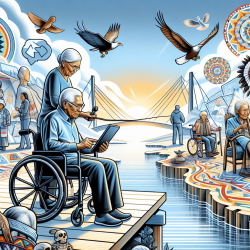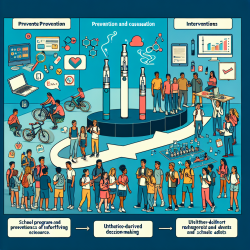Introduction
American Indian elders, a growing segment of the U.S. population, face significant health care inequities. Despite federal commitments to provide health care through the Indian Health Service (IHS), this group often encounters barriers such as provider shortages and limited access to services. A recent study by Willging et al. (2021) sheds light on the macro- and meso-level factors that contribute to these disparities, offering valuable insights for practitioners and policymakers.
Understanding the Contextual Influences
The study identifies several macro-level factors, including insufficient federal funding and inadequate policy support, which trickle down to affect health care delivery at the meso level. This results in limited elder-oriented services, workforce constraints, and compromised care quality. Practitioners working with American Indian communities must recognize these systemic issues to effectively advocate for and implement change.
Policy Implications and Recommendations
The research highlights the benefits of the Affordable Care Act (ACA), particularly Medicaid expansion, which has improved access to care for many American Indian elders. However, it also points out the limitations, such as bureaucratic barriers and uneven impacts across states. To address these challenges, the study recommends:
- Shifting IHS funding from discretionary to mandatory appropriations to ensure consistent and adequate support for elder services.
- Encouraging states to accept Medicaid expansion and providing resources for culturally congruent outreach to American Indian communities.
- Reducing bureaucratic barriers in health insurance to facilitate easier access and retention for elders.
- Enhancing data collection and monitoring to better inform policy decisions and resource allocation.
Call to Action for Practitioners
Practitioners can play a crucial role in bridging the gap between policy and practice. By advocating for policy changes and participating in community-driven research, they can help ensure that American Indian elders receive the care they need. Additionally, practitioners should focus on building strong relationships with elders, understanding their unique cultural and health care needs, and working collaboratively with tribal leaders and health care providers.
Conclusion
Addressing health care inequities among American Indian elders requires a concerted effort at multiple levels. By implementing the study's recommendations and engaging in ongoing research and advocacy, practitioners can contribute to meaningful improvements in health outcomes for this vulnerable population.
To read the original research paper, please follow this link: Macro- and meso-level contextual influences on health care inequities among American Indian elders.










